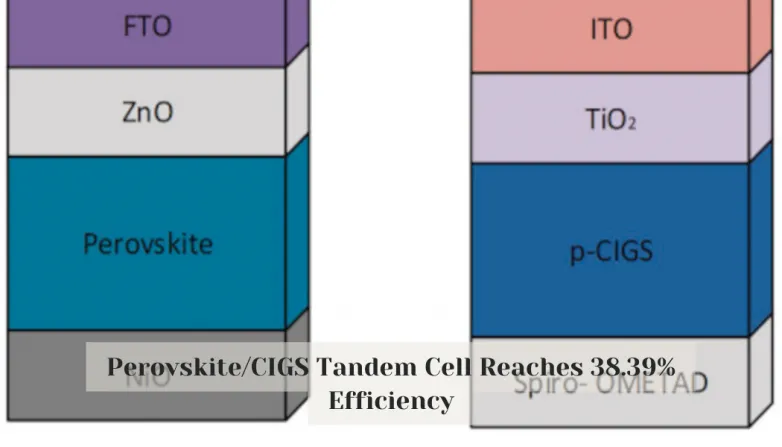Perovskite/CIGS Tandem Cell Reaches 38.39% Efficiency
- Unlock potential of tandem photovoltaic cell: Researchers design & simulate all-inorganic lead-free CIGS & perovskite cells for 38.39% efficiency.

Researchers from Southeast University and the University of Liberal Arts Bangladesh have designed and simulated an all-inorganic lead-free tandem photovoltaic cell based on copper, indium, gallium and selenium (CIGS) thin-film technology and perovskite. This novel device architecture has the potential to reach a power conversion efficiency of 38.39%. The top cell of the tandem cell consists of an absorber made of a perovskite material known as CsGe0.5Sn0.5I3 and a bottom cell based on CIGS. The simulation showed that the two cells can reach a potential efficiency of 24.656% and 25.062% respectively, with the top cell dominating due to its relatively open-circuit voltage large value. The tandem cell achieved an efficiency of 38.39%, an open-circuit voltage of 2.48 V, a short-circuit current density of 18.64 mA cm−2 and a fill factor of 83.40%. The researchers used the simulation tool SCAPS-1D solar cell capacitance software to optimize the structural parameters of the cells and found that the efficiency increases gradually from 100 nm to 1000 nm, almost starts to saturate at 800 nm and then maximizes at 1000 nm with a value of 36.25%. The proposed tandem structure's performance matrices outperform those stated in the most recent literature and the method is applicable for tandem cells composed of other materials too.
What Is the Potential Efficiency of CIGS and Perovskite Tandem Cells?
- The tandem cell achieved an efficiency of 38.39%, an open-circuit voltage of 2.48 V, a short-circuit current density of 18.64 mA cm−2 and a fill factor of 83.40%.
- The simulation showed that the two cells can reach a potential efficiency of 24.656% and 25.062% respectively.
- The researchers used the simulation tool SCAPS-1D solar cell capacitance software to optimize the structural parameters of the cells and found that the efficiency increases gradually from 100 nm to 1000 nm, almost starts to saturate at 800 nm and then maximizes at 1000 nm with a value of 36.25%.
- The proposed tandem structure's performance matrices outperform those stated in the most recent literature and the method is applicable for tandem cells composed of other materials too.
- The potential efficiency of CIGS and perovskite tandem cells is 38.39%, which is the highest efficiency recorded in the literature.
Also read

